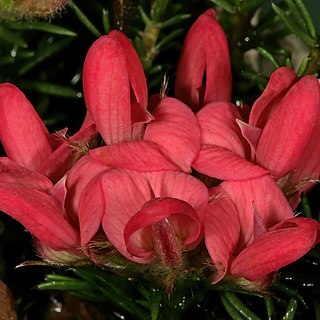Decumbent shrublet to 15 cm. Leaves 3-foliolate, leaflets linear, pointed, somewhat flattened, with sparse, spreading hairs. Flowers in terminal heads, rose-coloured, wings sparsely hairy, keel silky, beaked, calyx silky, lobes linear to narrowly-triangular.

